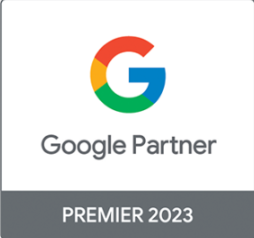When managing Google campaigns, it has never been easier to rely on Google to auto-optimise campaigns. the new Google auto-apply AI led optimisation is very impressive, but there’s a problem. This problem is not new, since the “day-dot” many people could set up campaigns but very few able to optmise campaigns for greater return or performance. Why? Not very many people get taught the “economic principles” of what metrics mean or matter when it comes to managing Google Ads. Even with the great advancements that Google has made with AI / machine learning, there still requires a thought process to know what recommendations should be applied for greater performance.
In this article we get back to the fundamentals of which metrics are important and a very simple method that can be used to make sense of all “the noise” to help inform genuine optimisation decisions.
Let’s start with what are the most important metrics (in my opinion):
1. Cost
Cost is of course the painful metric. It’s what you are prepared to spend or have spent to date. Cost must always be viewed relative to its corresponding performance (or your core objectives). Looking at a long list of campaign and cost data can be overwhelming, hence the method that we unpack later in this article. Cost is flexed at Campaign level using your daily budget. The combination of metrics is key to making sense of everything.
2. Conversion or Revenue
If your campaign is a lead generation campaign then the count of conversion actions that you have defined is obviously key to your gauge of success.
With e-Commerce that metric changes to online revenue i.e. sales revenue recorded in Google Analytics or similar.
The power of these metrics only becomes clear when viewed in relation to each other.
3. Daily Budget
This is the amount of budget you “allow” Google to spend on a daily basis. This may flex up or down irrespective of what budget you set (depending on how busy a day is) in terms of search demand or if Google has a bid strategy that recognises it’s a good day to spend a bit more, for example, if set to Maximise Conversions for example and it’s a day when the conversion rate/volume is strong, it will spend more.
This is a key lever to say be more or less aggressive on any given campaign on any given day or time period.
4. Conversion Rate
It is all too easy to look at a list of Conv Rate % stats and lose sight of its key meaning. So, let’s get back to the real DNA of this metric.
If a Conv Rate is 20% then just take a minute and think of it in a different but more useful context.
With any conversion rate you can use 100 as the base number to divide that number into, here are two examples…
Conv Rate is 2% therefore 100 / 2 = 50
Con Rate is 3% therefore 100 / 3 = 33
The significance of this is the last number….
For the first example, it means that in theory (or on average) it would take +/- 50 clicks to see a conversion.
The next example means in theory (or on average) it would take +/- 33 clicks to see a conversion.
This is not rocket science (we know) but now take it one stage further.
Now, look at the Avg CPC (cost per click) let’s say it’s 3 in each example…
50 clicks X 3 = 150 (cost per conversion on average)
33 clicks X 3 = 99 (cost per conversion on average)
This is essentially your realistic cost per sale or action (on average) across the whole account you could expect if every campaign converted at the same COST & COV RATE & COST PER CLICK.
This last point makes it complex, as all campaigns will of course perform differently.
This is where our optimisation method: % Cost v %Conv comes into play to help make sense of all the numbers.
But there’s one last key metric to consider.
5. Impression Share
Impression Share is an indicator of how frequently out of 100% of the time your ads are showing. It is not full proof but a good indicator of how much you are showing versus the demand for the keywords in any given campaign. This is also a factor of your daily budget.
If your Search Impression Share is for example 50% and your daily budget is 400 it’s a rough indicator that you would need to spend double, so 800 a day to show closer to 100% of the time. This is not an exact science but guides you on where you could spend, the important part is that any such decisions must be based on performance, so now here comes the method.
% Cost v % Conv
The simple method to make sense of any account performance is to download the following reports from Google Ads, choose a min period of 30 days, or whatever makes sense to give you a decent performance data set, there’s no hard and fast rule here.
For each of the below its essential to make sure you have the following columns included in the report:
– Interactions
– Cost
– Conv’s
– Cost Conv
– Conv Rate
– Impression Share (Search and/or Display)
1. Campaign Level – Report
2. Keyword Level – Report
Once you have the data and have loaded to either Excel or Google Sheets, layout the data as follows. Adding two new columns at the end:
% Cost (cost for campaign or keyword out of total cost)
% Convs (convs as a % of the total number of conversions)
OR %Revenue if an e-Commerce campaign
Sort the data in Cost Descending order, so that the expensive stuff is surfaced to the top of the sheet.
Now you can look at what each item provides in terms of:
% Cost – the pain of investment
Compared to % Convs (or Revenue) the reward that item provides in relation to cost
So if a Campaign (same applies to keywords) provides more % Convs / than % Cost, that’s a good thing.
If a Campaign (same applies to keywords) provides more % Cost / than % Convs, that’s a bad thing. You get the picture……it’s a simple way of making a comparison to surface the good or bad stuff.
If something is GOOD, pay close attention to the Impression Share metrics, for example.
If Campaign X is providing:
– 20% of Cost
– 80% of Conversions
But the Impression Share is 50%, it means that a great Campaign or Keyword is only showing 50% of the time. Therefore, you may want to consider diverting some of the daily budget away from the bad or poorer performing items to the good ones. The impact is that immediately your account will have investment in more % of good and less % of bad.
If you use such a simple comparison method, it helps get rid of all the noise and will automatically get your eyes to focus on the metrics that matter.
All the above sounds obvious right? But how many of us actually take time to understand the data that is available to us…. we all know the answer.
If you are struggling with your Google Ads investment and require a helping hand, the Algorithm team are happy to help with paid audits, strategy, or media plans, or even manage the whole process for you as part of a performance marketing project.
Author : Simon Lloyd



